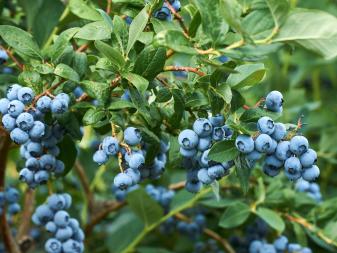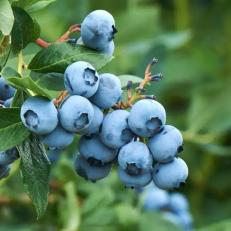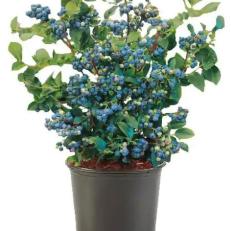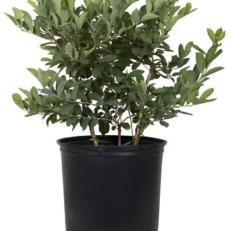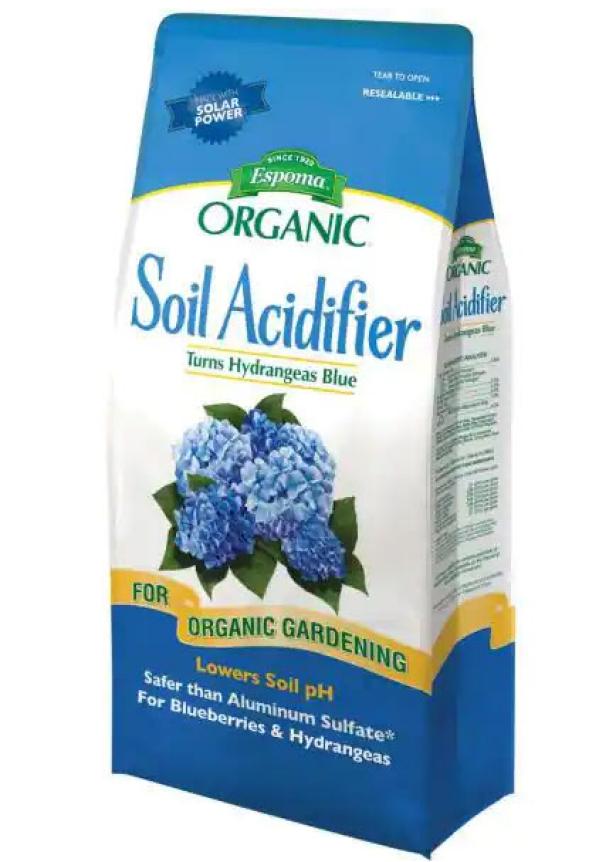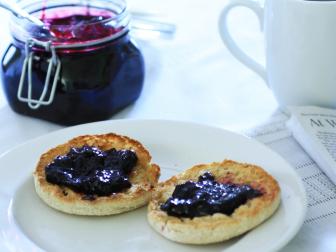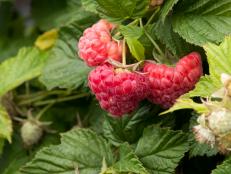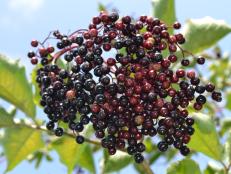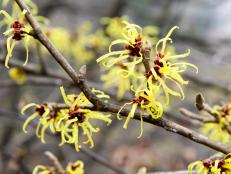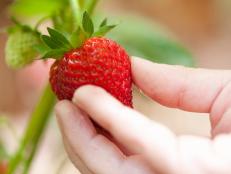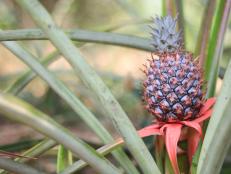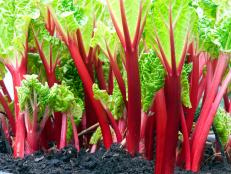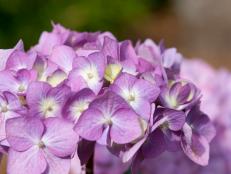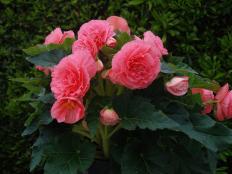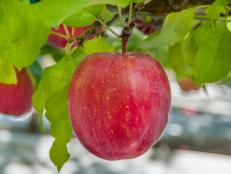How to Grow Blueberries
Blueberry plants can produce fruits for decades. Learn how to plant and maintain them the right way so they will reward you with delicious berries for years to come.
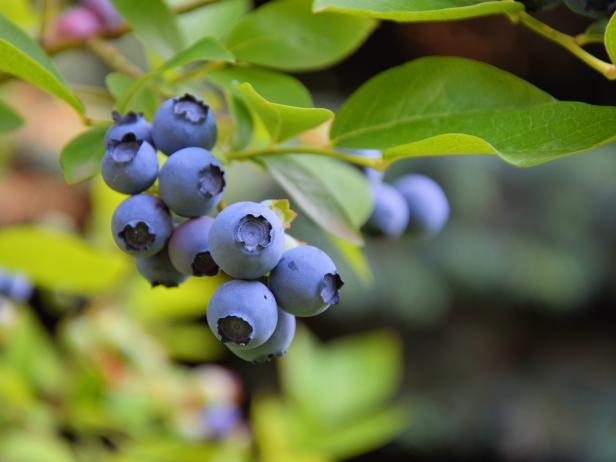
Shutterstock/Studio Barcelona
One of the biggest nutritional powerhouses that you can eat comes in a very small package. Blueberries are packed with more cancer-fighting, anti-aging, eyesight-saving and disease-fighting antioxidants than foods like spinach and salmon. Sure, they're the pie-inspiring, cereal-topping, muffin-mixing treat that can make your mouth water, but beloved blueberries are becoming a tasteful choice in another arena — the landscape.
Blueberry bushes of course reward us with their fruit, but they also can be grown as a shrub or screen. You can plant blueberry bushes in containers and use them as edible ornamentals to decorate a patio.
Blueberries are typically grown in humid, northern climates that have winter chills, mild summers and low-pH or acidic soils, conditions that limit their range. But many new varieties are available for lower chill areas, very warm areas and coastal areas. The blueberry now has an enormous range.
If you're looking for edible plants to grow in your garden, consider blueberries. Once the pH of the soil is right (on the acidic side), you'll find they are among the easiest fruits to grow.
Planting Blueberries
Cross-pollination is very important for growing blueberries, so you need at least two plants. Make sure to buy varieties in the same family.
If you don't have room for large blueberry bushes, some dwarf varieties are perfect for containers; they look great on patios or in small spaces and some modern varieties don’t require a second plant for pollinating.
Preparing the Soil
Choose a planting spot that receives six to eight hours of sun per day and has acidic soil, somewhere around pH 5.5. Sulfur can be added to the soil to make it more acidic and suitable for growing. To learn your soil's pH, take a soil sample to your local extension service for testing. Your extension service can recommend potential amendments to improve the soil based on the results. Prepare loose, rich soil for planting, working in compost as necessary.
Spacing and Hole Depth
Plant blueberry bushes 6 feet apart. You can plant closer if you want to create a hedge. Dig a hole 2-1/2 feet wide and a foot deep. Add some soil back into the bottom. Place the blueberry bush in the hole at ground level and surround it with peat moss, garden soil and compost. Adding these extras will ensure your blueberry bush will have rich nutrients.

SHAIN RIEVLEY
Blueberries need acidic soil — somewhere around pH 5.5 — and should be planted about 6 feet apart for best crop production.
Mix in acidifier if your soil's pH level is higher than 5.
Planting Blueberries in Containers
Make sure to use a weatherproof container that won’t crack during winter’s heave and thaw. If you’re in a climate that stays below freezing for much of the winter, you may have to move your blueberry containers to a protected area. Fill the container about halfway with soil and then place the plant on top.
Loosen the roots before placing the plant in the pot. Add some peat moss and compost. Keep the top of the soil at the same level as it was in the original pot. Sprinkle in a little acidifier to keep the pH level low. Tamp down the soil mixture, then add a layer of mulch on top to help keep the soil moist.
Containers dry out quickly, so it’s important to routinely water. However, blueberries have a shallow root system so they can be overwatered. They prefer a shallow watering and not a deep soaking. Blueberries love the sun, but in the hottest part of the summer, you may have to move them to a spot where they get afternoon shade to prevent them from getting scorched.
Blueberry Bush Care
A healthy blueberry plant will fruit for 15 to 20 years before slowing down.
Blueberry Pruning
If growing in the type of environment they love — acidic soil, not too much competition from weeds and full sun — blueberry bushes are very prolific berry producers. It's their high productivity that wears them out. Canes that are more than seven years old become less productive. To keep them producing well, blueberry bushes need to be pruned every year.
- If your bushes have never been trimmed, be careful not to go overboard the first year: Remove no more than two or three of the oldest canes (more than seven years old).
- Remove any diseased or broken wood, plus crossing branches. You want the bush to have a narrow base and a wide, open top that allows sunlight and air in.
- The best time to prune blueberry bushes is late winter while they're still dormant.
It will take about two years for young branches to produce fruit, so be patient. Remove leaf litter and other debris from the base of plants. Harvest all the berries instead of allowing them to fall to the ground.
Fertilizing Blueberries
The ideal time to fertilize blueberries is in the spring. Use fertilizers sparingly. Beware of high-nitrogen fertilizers. Although you may get plenty of vegetative growth, fruit production won't be as good.
You can plant cover crops such as clover under blueberries to add nitrogen to the soil naturally and to prevent weeds.
Test the soil’s pH level yearly. Amend soil around existing plants as needed. Amendments like compost and fertilizers that are approved for use on acid-loving plants like camellias and azaleas are also good for using on blueberry plants.
Keeping Birds Away
Birds love blueberries. As soon as the berries begin to ripen, cover the bushes with bird netting to protect the fruit. Make sure there are no gaps or openings in the netting. Secure the netting to the ground with bricks, stones or other weights.
You can also keep the birds away with shiny objects such as pinwheels or aluminum pie plates hung from strings on or near the bushes. Move the pinwheels and shiny objects daily and then remove them completely once fruiting is over.
Diseases
Fungal diseases include Botrytis, mummy berry, Anthracnose and powdery mildew. Stem and foliage diseases are Phomopsis twig blight and Botryosphaeria stem blight and stem canker. Blueberries also can suffer from root rot due to water-logged soil. Avoid root rot by planting in an area that drains well or in raised beds.
To control disease and insect problems, maintain good ventilation around the plants. Prune away crossing and rubbing branches. Thinning out branches every other year or so helps to promote air circulation within the plant.
Insect problems can be caused by Japanese beetles, cranberry fruitworm, cherry fruitworm and blueberry maggot fly.
Harvesting Blueberries
Depending on the variety of blueberry, harvest can occur from midsummer to late summer. Blueberries change from green to pink to red and then to blue, at which time they are ripe and ready to harvest.
Blueberries are ready to be picked when they are a uniform blue color. Check near the stem to make sure there's no lingering green, white or rose color; let them be if there is.
How to Freeze Blueberries
Keep this popular superfood around all year with easy freezing instructions.
Don't wash the blueberries until you're ready to eat them. Blueberries can be refrigerated for short periods, but you can freeze them if you need to preserve them for a longer term.
Ripe berries can stay on the bushes for days or weeks with no depreciation in quality but most people pick them as soon as ready to avoid losing them to the birds.
Blueberry Varieties
There are five main types of blueberries grown in the US.
Lowbush blueberry (Vaccinium angustifolium and Vaccinium myrtilloides), the state fruit of Maine, grows up to 2 feet and is often called "dwarf blueberry." Its range is the northeastern US as well as eastern and central Canada. Lowbush blueberries spread by underground stems. The cultivar 'Top Hat' is a mounded cultivar under 2 feet tall and wide, while 'Burgundy' features dark red leaves in the fall and grows about a foot high and about 3 feet wide.
Highbush blueberries (Vaccinium corymbosum) grow 5 to 9 feet tall and spread just as wide. They're native to the eastern and northeastern US. Popular cultivars include early-blooming 'Earliblue' and 'Collins;' mid-season blooming 'Blueray,' 'Bluecrop,' and 'Berkeley;' and late-blooming 'Jersey' and 'Patriot.'
Rabbiteye blueberries (Vaccinium virgatum) grow from 6 to 10 feet tall and are native to the southeastern US. Cultivars include standard-blooming 'Tifblue;' early-blooming 'Climax' and 'Woodward;' mid-season blooming 'Briteblue' and 'Southland;' and late-blooming 'Delite.'
Additionally, there's the hybrid southern highbush, which grows 6 to 8 feet high and was developed for areas with mild winters such as the coastal Southeast, Florida and California. Early to mid-season cultivars include 'Star,' 'Windsor' and 'Santa Fe.' Mid- to late-season cultivars include 'Bladen,' 'Pamlico' and 'O'Neal.'
Half-high blueberries, a cross between highbush and lowbush blueberries, grow 3 to 4 feet tall. Cultivars include early-blooming 'Southblue' and mid-season blooming 'Jubilee' and 'Sunshine Blue.'
Buy Blueberry Plants
Blueberry Plant Selection
Plant multiple varieties that mature and produce fruit at different times of the season. This will extend the harvest time to the end of the season, which is generally July to September. Blueberries are self-pollinating, so they don't technically need another plant to pollinate; however, you'll increase your harvest by encouraging plants to cross-pollinate. As noted above, it's advisable to plant two or more blueberry plants of the same type but different varieties, promoting cross-pollination.
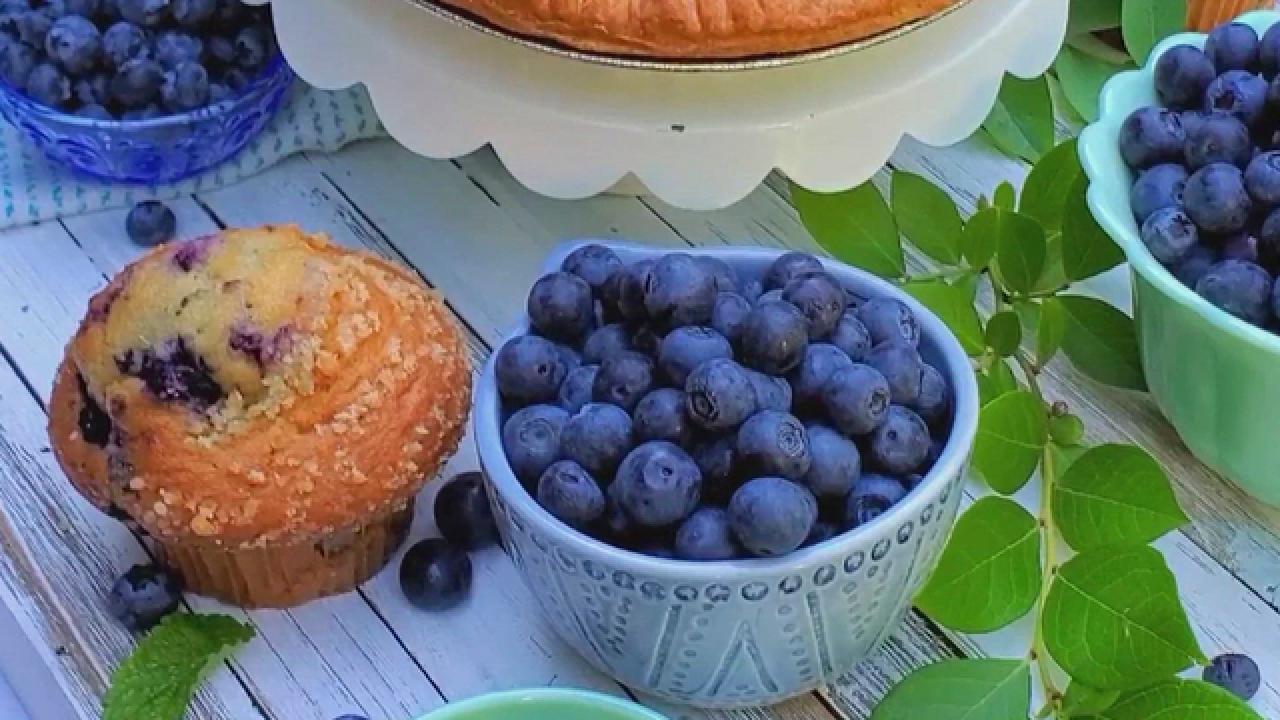
Cooking with Blueberries
Banish the Blues: How to Make Blueberry Pie
The recipe may be simple, but this sweet pie is huge on flavor.
Pass the Pectin: Homemade Blueberry Preserves
This all-natural recipe skips on the additives but not the flavor.

.-Battle-on-the-Beach-courtesy-of-HGTV.-.jpg.rend.hgtvcom.196.196.suffix/1714761529029.jpeg)




